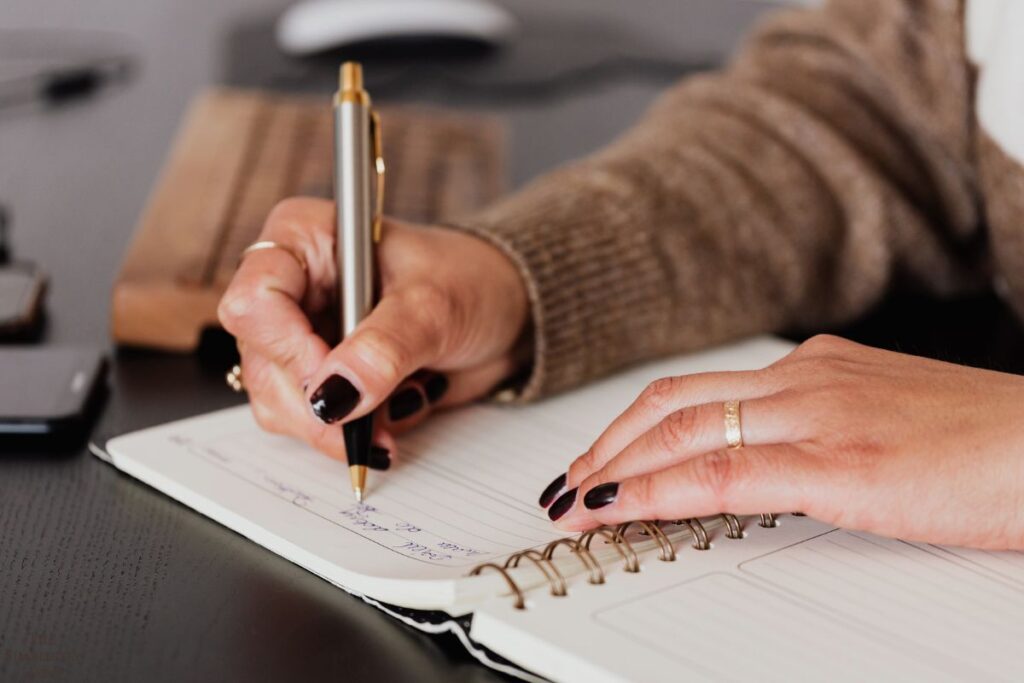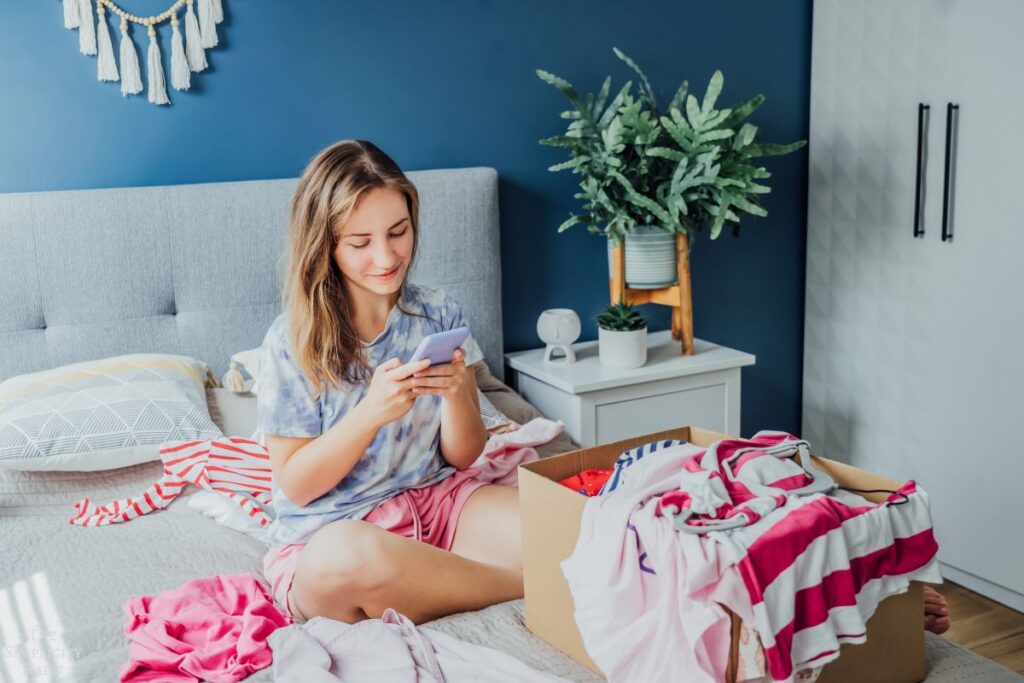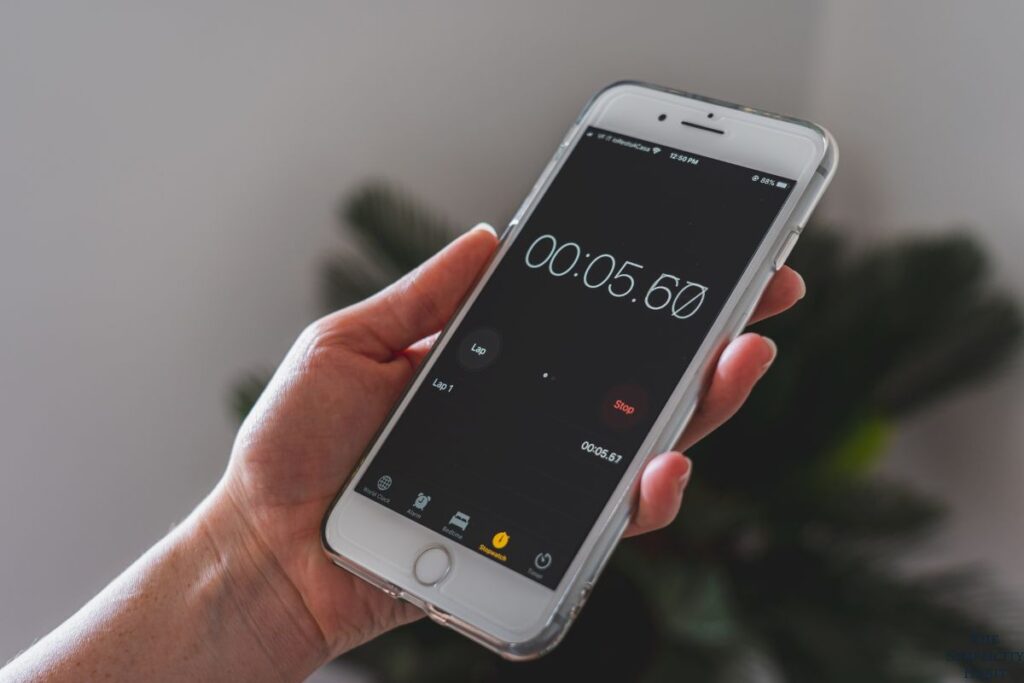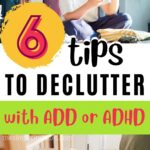Inside: Decluttering with ADD or ADHD can feel pretty challenging. Use these six tips to help you stay focused on the task at hand.
Let’s be honest. Most of us don’t find decluttering to be a particularly easy or exciting process.
The thought of spending time and energy sorting through your stuff, getting rid of things, and overhauling the systems you use to stay organized isn’t particularly fun – especially when there are a million other things we’d rather be doing.
But for those who struggle with ADD or ADHD, the thought of decluttering can be particularly intimidating. Dedicating an entire weekend, or a full day, or even a several-hour stretch to a singular, focused task might feel challenging – if not totally impossible.
And it’s easy to get distracted and discouraged, throw up your hands, and totally give up on the whole process.
Fortunately, there are steps you can take and tips you can incorporate into the process to make it easier and more achievable – even if you’re dealing with ADD or ADHD.
Not sure how to make it happen?
Keep reading to learn some simple, actionable strategies you can implement today to get focused and achieve your decluttering goals.

Decluttering With ADD or ADHD: Helpful Tips to Stay Focused and Get the Job Done
The constant struggle to stay focused and avoid distractions can make the task of decluttering easier said than done. But with the right tips and techniques, it is definitely possible to overcome these obstacles and create an organized, clutter-free space that brings you joy.
1. Set simple, clear goals for yourself when you declutter.
It’s easy for anyone to get overwhelmed when you begin the decluttering process. You’ve got clutter of all shapes in sizes in every nook and cranny of your home – and in some cases, it’s something you’ve been living with for years.
Where do you even start? How do you know when you’ve done enough?
A great first step to take involves setting a few clear and realistic goals for yourself. Thinking about the task at hand, what do you hope to accomplish as you declutter? What is the end state you hope to achieve?
Now, break those big goals down into smaller, more manageable goals. As an example, if decluttering your kitchen is one of your big goals, you might set smaller goals like:
- Organize your silverware drawer and get rid of utensils you don’t use.
- Clear out your pantry and implement an organizational system that’s sustainable in the long-term.
- Take everything out of your cabinets and find a better way to store your pots, pans, and cookware.
- Store, sell, or donate countertop appliances (like stand mixers, air fryers, or toaster ovens) you haven’t used in at least six months.
Whatever goals you decide to focus on, make sure you write them down. Put them on a whiteboard or sticky notes, or put them into the notes app on your phone.
Revisit them as needed to stay focused – and check them off once they’re complete to give yourself a little extra motivation.

2. Prioritize ruthlessly.
The next step to decluttering with ADD or ADHD is to determine what you’ll focus on first.
Now that you’ve set your decluttering goals and broken the bigger task into smaller pieces, it’s time to prioritize. Ask yourself – what do you want to accomplish first?
You might have some tasks that you need to accomplish first to make space to tackle what’s next. Maybe you’d like to prioritize your easiest tasks first so you can get some quick wins and find the motivation to tackle more challenging projects.
Or maybe you’re going to address the messes that bother you most first – then, move on to the less visible clutter.
Figure it out and write it down so you can reference your priorities later if you’re ever unsure what you should be focused on.
There’s no right or wrong way to prioritize – it’s entirely up to you. But by prioritizing before you declutter, you can maintain focus on the specific task at hand and be more likely to see it to completion.

3. Minimize distractions when it’s time to declutter.
Another key thing to do when decluttering with ADD or ADHD is to be intentional with shutting out distractions.
It’s easy for anyone to get distracted when decluttering. The process can be challenging at times – so it’s tempting to divert our attention to other things we’d rather be doing.
By eliminating or minimizing distractions, you’ll set yourself up for a more successful decluttering session.
Don’t put your favorite show on TV and expect to make good progress toward your decluttering goals. If you find yourself too distracted by the playlist you’ve put on, change it.
And if you keep coming up with other tasks and to-do’s that you think you should do instead, resist the temptation. Instead, write them down and revisit them later.
Chances are, none are so urgent that you need to immediately stop what you’re doing and redirect your attention. Set your phone aside and be prepared to focus on the task at hand.
Also, make sure to focus on the space you’re working in. Don’t take misplaced items to other rooms until you’re done. Otherwise, you’re likely to get distracted during the process.

4. Declutter in short, focused time blocks.
When decluttering with ADD or ADHD one of the most important things you can do is avoid taking on too much at once.
Committing to spending a whole day decluttering – or even a few hours focused on the task – is an easy way to set yourself up for failure.
Instead, try to declutter in focused, dedicated blocks of time. These could be as short as 5 or 10 minutes, or as long as 30 minutes.
By working in sprints instead of marathons, you’ll find you have more energy, better focus, and be more likely to see your task through to completion.
Identify a specific goal you want to achieve during your focused time, then set a timer. When that timer begins, direct your attention to the task at hand.
And when it goes off? Stop what you’re doing, even if you haven’t quite finished what you set out to accomplish. You can always return to it later.
Not sure where to start? Check out these 5-minute decluttering tasks. If you have a little longer, try these 10-minute decluttering tasks.

5. Use storage solutions that work for you.
Decluttering isn’t just about getting rid of stuff you don’t need. It also involves setting yourself up for success in the future and staying organized in the long-term.
One easy way you can do this?
Use storage solutions to keep your belongings tidy and ensure everything has a dedicated space where it belongs.
There are all kinds of storage options out there, from plastic bins and boxes to closet systems and over-the-door solutions.
Got a drawer that tends to dissolve into chaos? Invest in some drawer dividers to keep them organized.
Find yourself forgetting what goes where on a regular basis? Consider labels or coming up with a color-coded system to keep yourself on track.
The most important part of creating an organizational system in your home is finding one that works for you. Choose solutions that align with how your brain works. The goal is to create a sustainable system and that only works if you design one that makes sense to you.

6. Don’t be afraid to ask for help.
And if you’re still feeling overwhelmed by the process of decluttering your stuff?
It’s completely OK to take a deep breath and ask for some help.
That help might come in the form of a friend or family member who’s willing to come over and spend some time helping you sort through your belongings, determine what needs to go, and come up with systems to stay organized.
Alternatively, it might make sense to hire a professional organizer. There are plenty of people who do this for a living and can help you set yourself up for success – now, and in the future – when it comes to minimizing clutter and staying organized.
If you’ve experienced decluttering with ADD or ADHD, what’s helped you? Leave a comment and let me know!
Sign up on the form below to get weekly decluttering tips and inspiration sent straight to your inbox. You’ll also get the free 5 Areas to Declutter in 10 Minutes Checklist to help you get started decluttering today.


My granddaughter ( age 27) has ADA now I understand why she has issues with clutter. her mother helped her decluttered her bedroom it took 7 hours that was just her bedroom she help her organized her bedroom. thank you for this informative issue.
I have found that if I’m tired it will seem like I’ve done a lot, but I actually made it worse, so I know not to try and do any work or declutter if I’m tired.